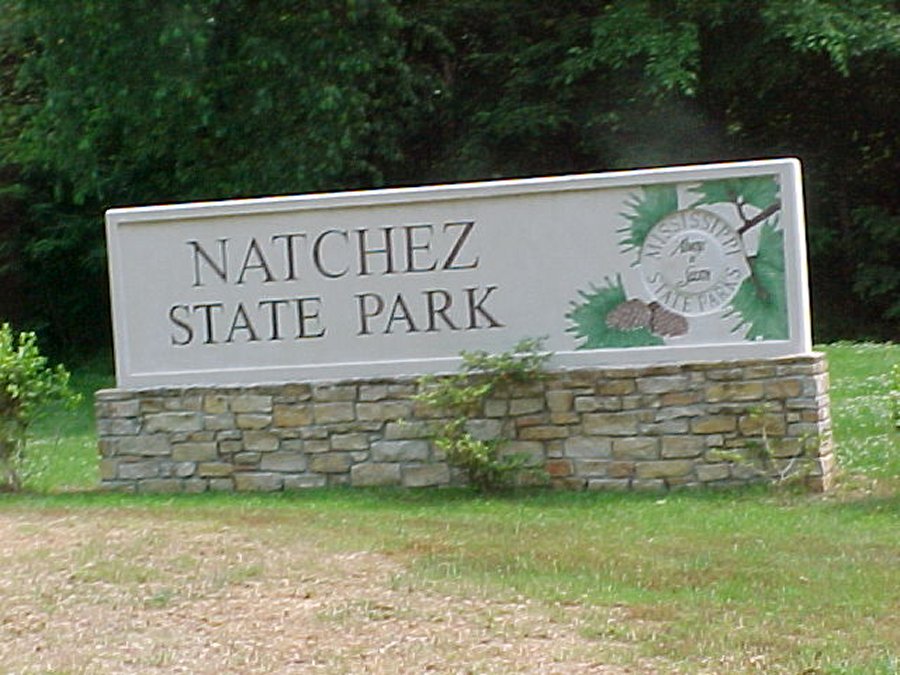
We stayed in Natchez State Park for $10.00 a night. |

Natchez State Park entrance, three miles to the campground. |

Our site for three nights. |
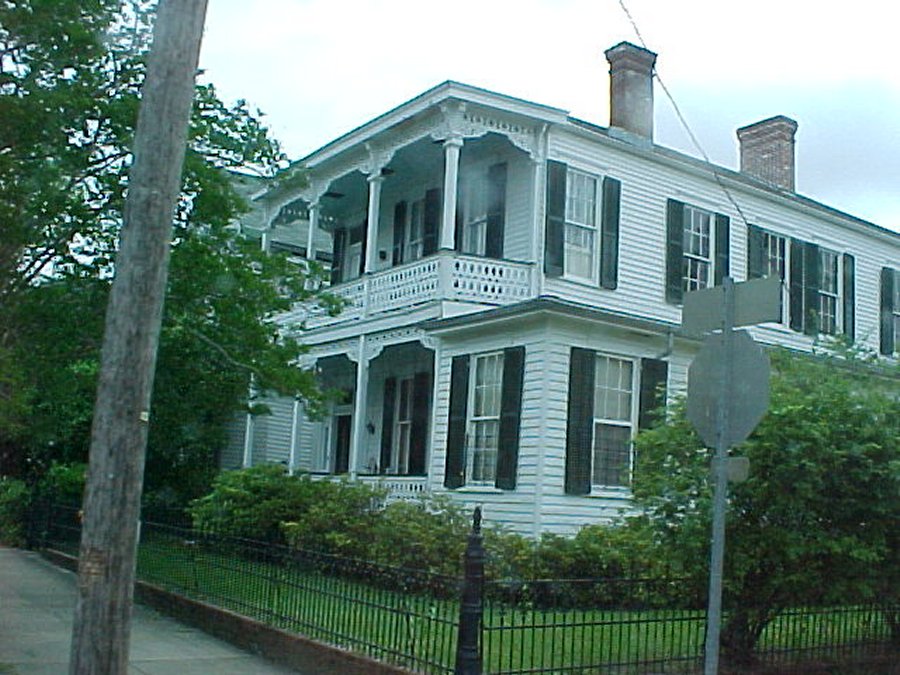
Beautiful antebellum houses in town. |
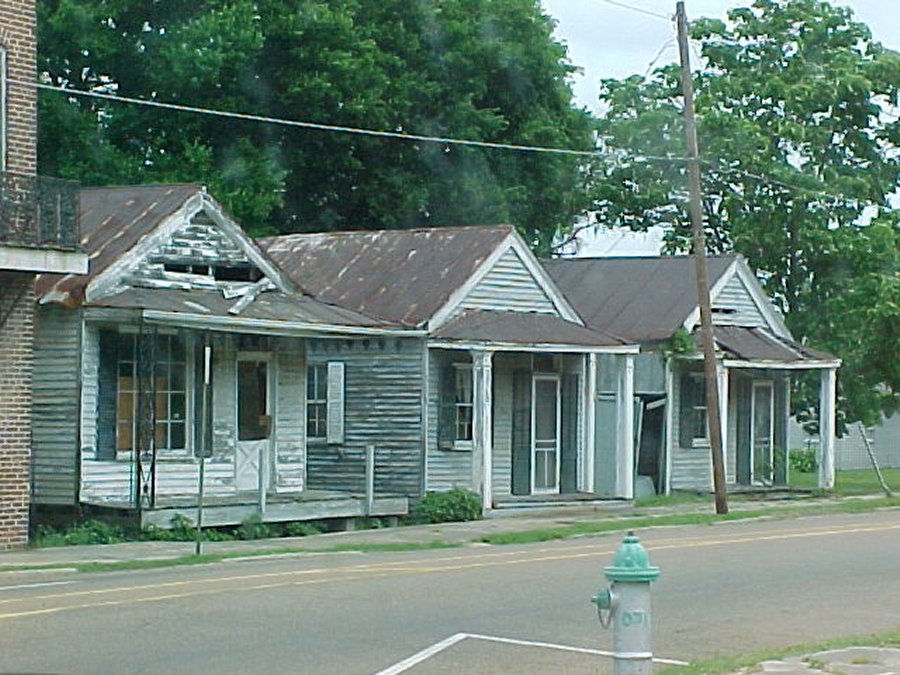
houses on the other side of the tracks. |
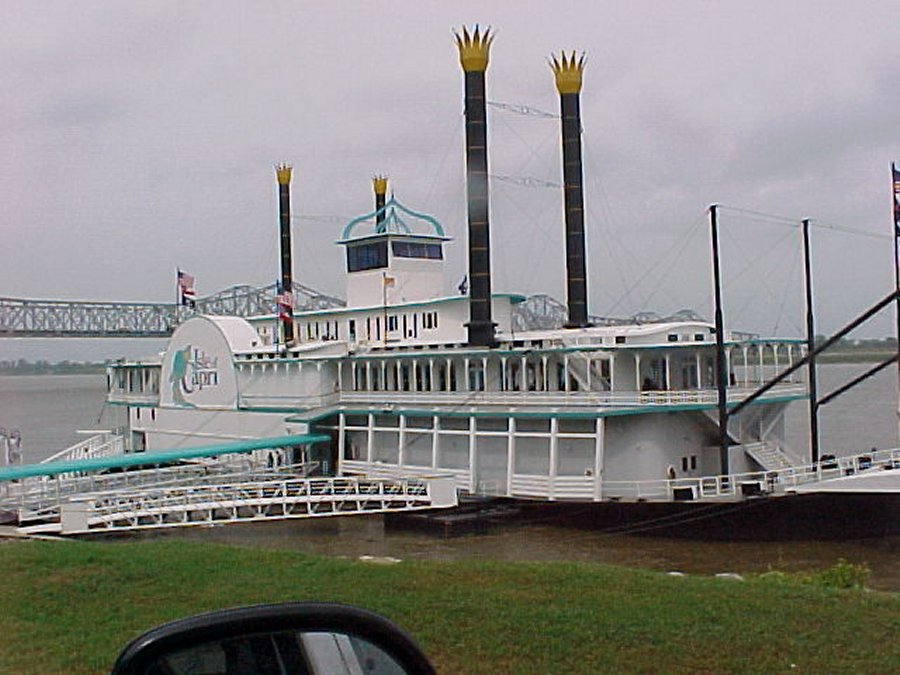
The Isle of Capri gambling boat. |
Here in Natchez you may wander in old-fashioned gardens where fall
splashes of scarlet and gold flicker among lush evergreens. Ladies in hoopskirts will welcome you to eighteen
beautiful antebellum houses, which still treasure the relics and furnishings of a vanished era. Most of these
houses charge $6.00 per person for a tour and another $3.00 if you want to take pictures. We only toured Longwood
and Melrose, the National Forest Monument. We found a couple of others and just walked around outside taking
pictues. The pictures below are from a tour companys brochure where for $23.00 per person they will take you on
a tour of three of different houses.
|
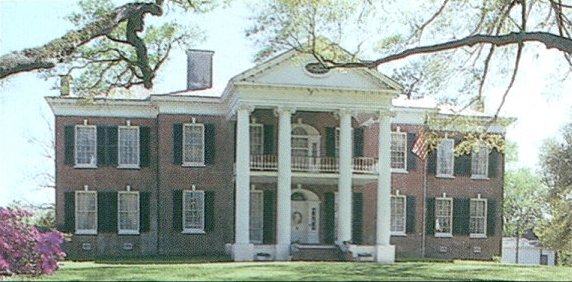
Auburn, 1812. |

Stanton Hall, 1857, |
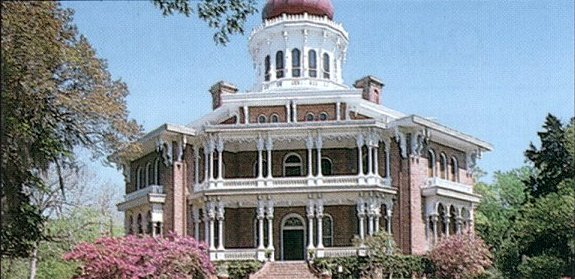
Longwood, 1860 - 1861.
One we toured this one. |

Magnolia Hall, 1858 |
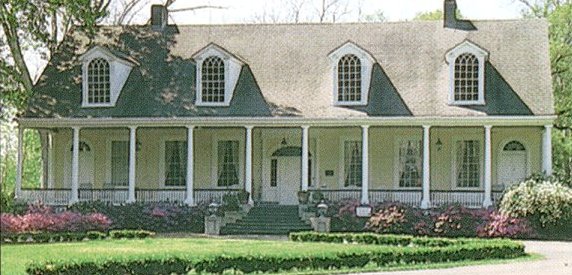
The Briars, 1814. |
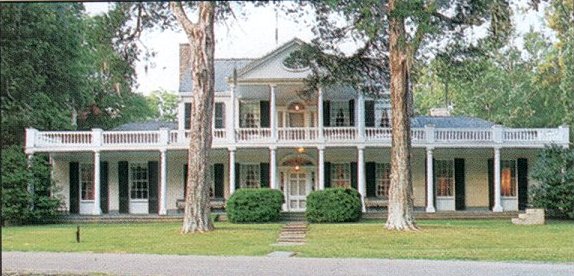
Linden, 1800. |
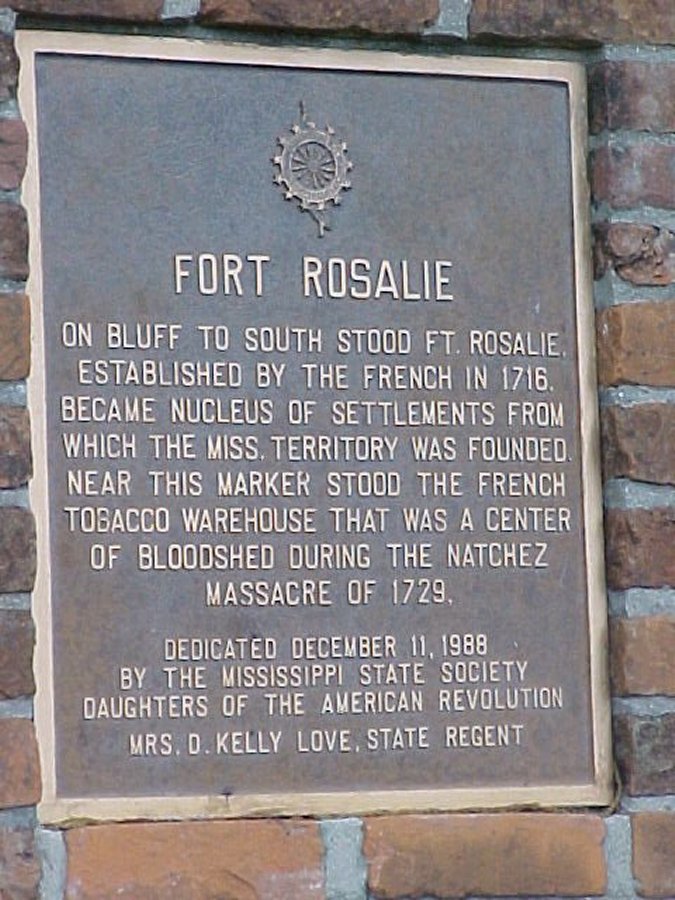
Rosalie, which was once a fort was the first house we stop at. |

The Rosalie house. |
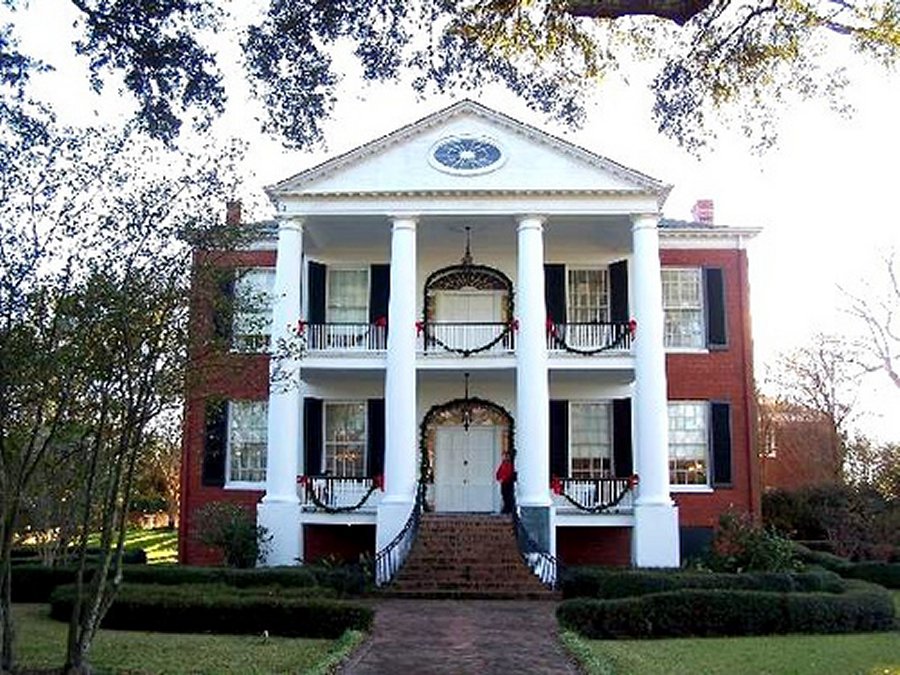
Front of the Rosalie house. |

Funny nuts on a tree. |

A magnolia blossem. |
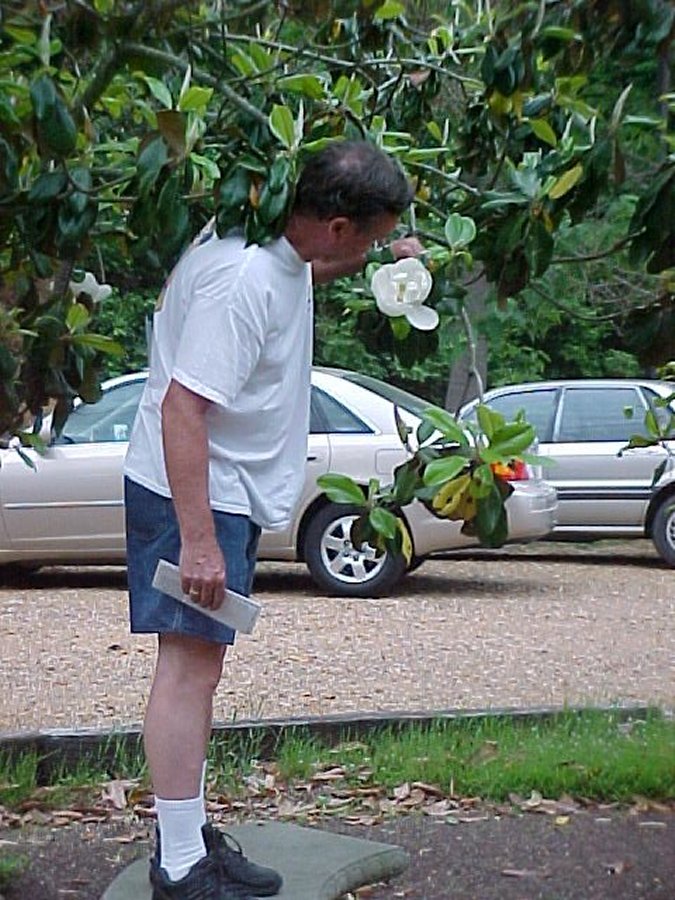
David smelling a magnolia blossem. |
We paid our $12.00 to tour Longwood. It is an interesting octagon
six story 30,000 square foot house. Planned in 1859 for cotton-nabob Haller Nutt and his wife Juila by architect,
Samuel Sloan, the mansion was begun in 1860. Using the octagon form with four main floors, a fifth story solarium
and a sixth story observatory, the structure was designed to have 32 rooms. each with its own entrance onto a
balcony. On the main floor were to be eight rooms, including a drawing room, banquet hall, library, reception room
and a special apartment for Mrs. Nutt. connecting the levels was to be a grand spiral staircase. Crowning the whole
was a Byzantine-Morish dome with a 24 foot finial reaching heavenward. |
In April 1861, all his hopes and dreams were smashed by the declaration of the War between the
States. the craftsmen dropped their saws and hammers and fled North to pick up rifles and bayonets, never to return. Nutt and a few local workers
and slaves completed the basement level. This area, where a wine cellar, school room, recreation room and office were to have been, was converted
into living quarters for him, his wife and eight children. Here they lived in nine rooms as war swirled across the South. |

 |
On June 15, 1864, Haller Nutt died in the basement of his unfinished mansion. The diagnosis was
pneumonia, but legend insists that he died of a broken heart over his dream house. Julia and the children lived on in the cellar doing only a minimum
to maintain the great hulk looming over them. She died in 1897 and was buried beside her husband in the Longwood family cemetery. grandchildren owned
Longwood until 1968 and today is is maintained, yet unfinished, by the Pilgrimage garden Club. |
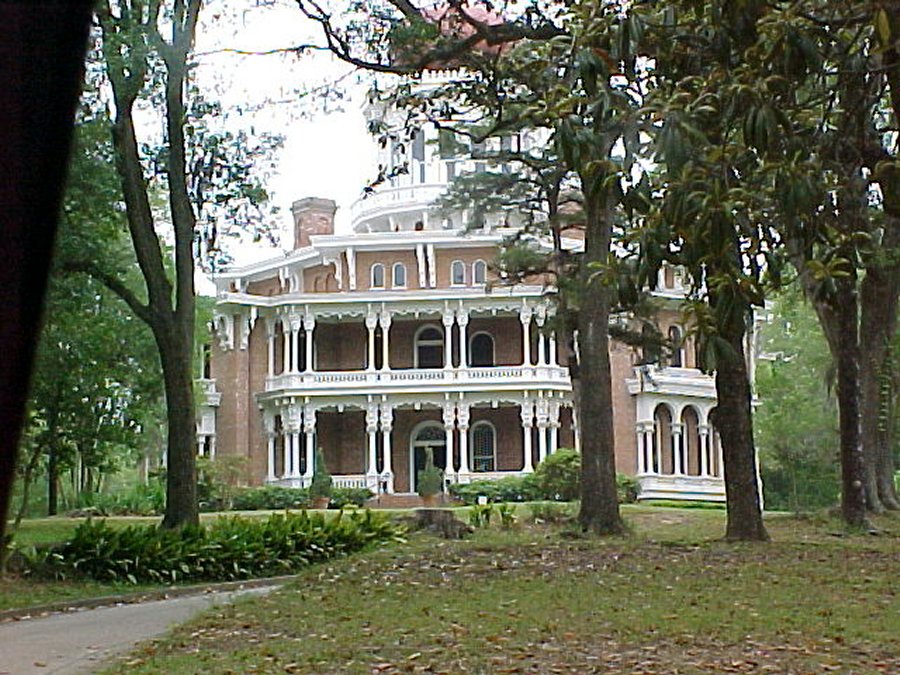
The unfinished house today. |
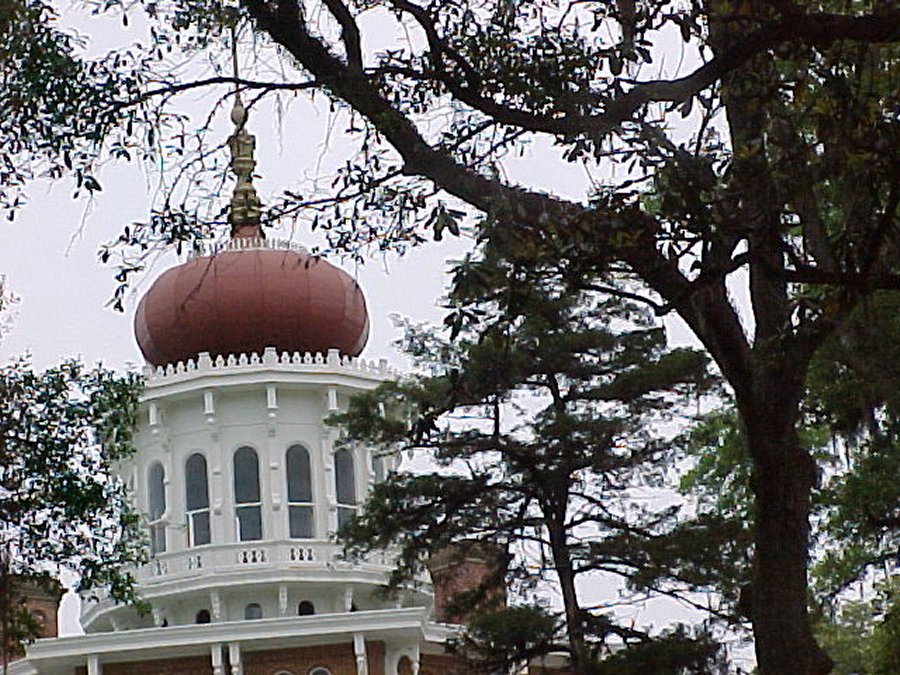
The finial reaching heavenward. |

Back side of the house. |

Looking up into the observatory that was never finished. |

Unfinished thrid floor. |
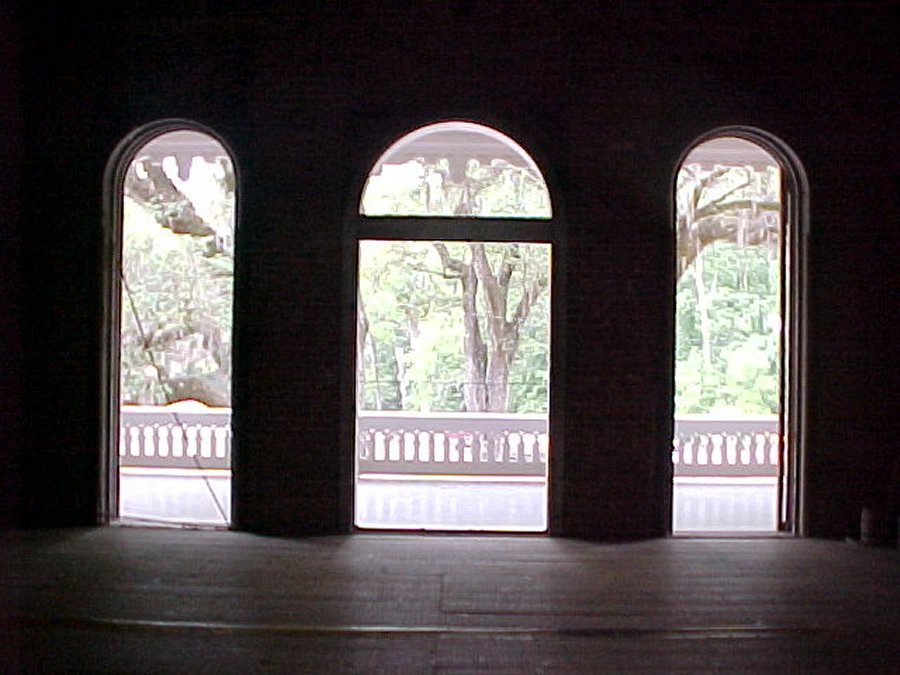
Looking out the second floor. |

The servents quarters. |

An old buggie in the barn. |
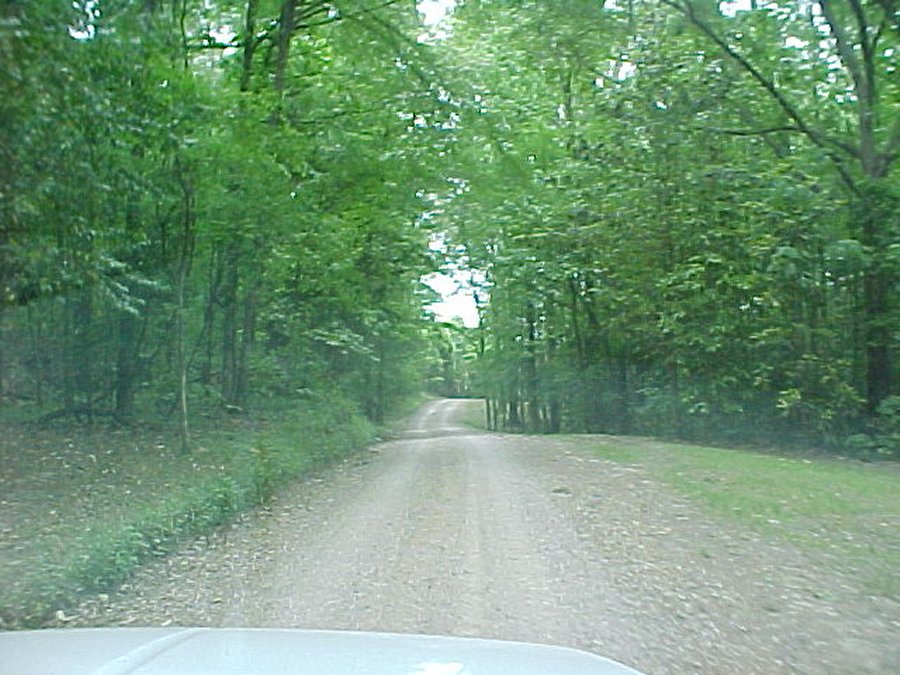
Out driveway was different than the in driveway. |
![]()
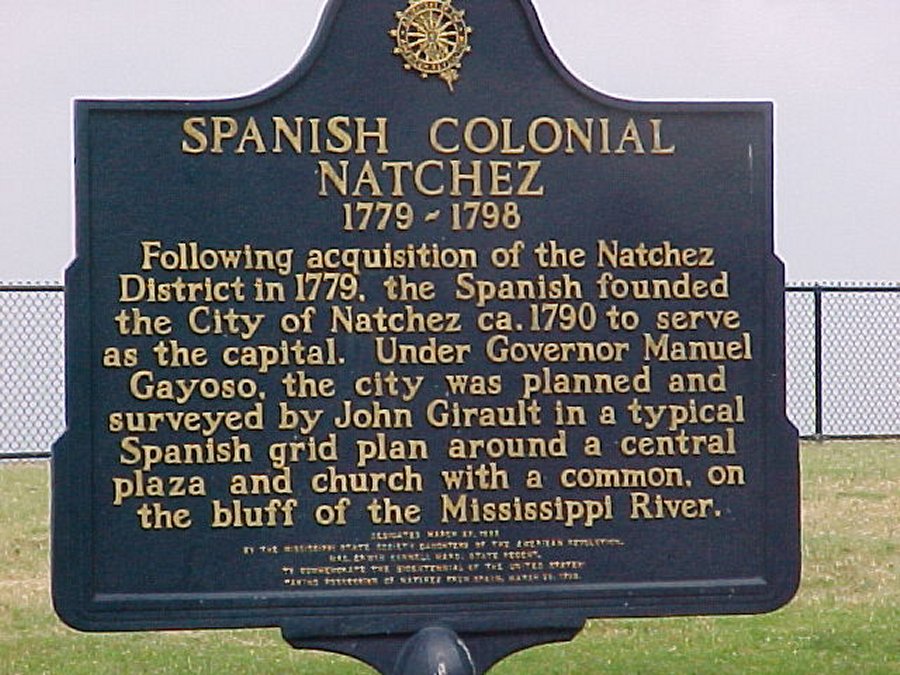
![]()

![]()